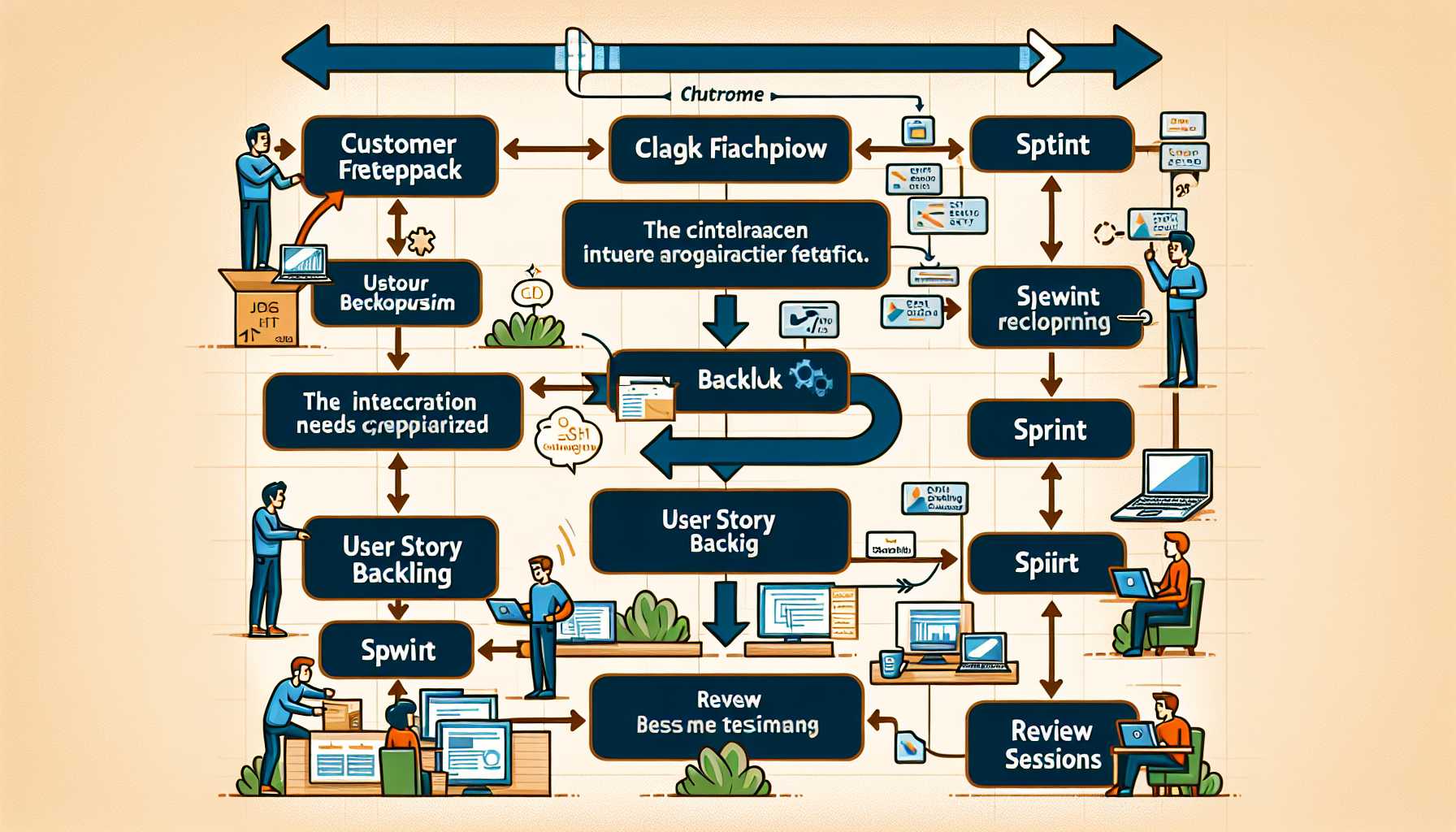Integrating Customer Feedback into Agile Development: A Guide for Product Leaders
As a seasoned product leader in the tech industry, one challenge that continually surfaces is the integration of customer feedback into the agile development process. In this post, I’ll draw upon my experiences to demystify this integration and share strategies that have proven effective in marrying customer insights with agile frameworks.
The Agile Framework: A Primer
The agile development process is an iterative and incremental approach that promotes flexibility, collaboration, and customer-centricity. But incorporating customer feedback into agile’s rapid pace can sometimes feel like trying to change the tires on a moving car. Let’s explore how to make this integration seamless and productive.
Why Integrate Customer Feedback into Agile?
Before delving into the ‘how,’ understanding the ‘why’ is important. Customer feedback is the beacon that guides the product towards market fit and user satisfaction. I’ve led teams where agile flexibility made adapting to customer needs real-time possible, increasing the product’s value proposition immeasurably.
Strategies for Integrating Customer Feedback into Agile
Now, onto the strategies that have served me well in weaving customer feedback into the fabric of agile development.
1. Start with a Customer-Centric Backlog
The product backlog is a living document and should be deeply influenced by customer feedback. In one of my most successful projects, customer priorities steered our backlog priorities, ensuring that we worked on what mattered most to them first.
2. Design Sprints around Feedback Themes
When possible, organize sprints around coherent feedback themes. This approach not only makes for more organized work but also allows for concentrated user testing and feedback gathering on specific issues or improvements.
3. Embed Feedback Loops in Sprint Cycles
One of the agile methods I’ve used to great effect is embedding feedback loops directly within sprint cycles. Adding a feedback review step before the sprint review stage ensured customer insights were freshly considered before planning the next iteration.
4. Leverage Retrospectives for Continuous Improvement
Sprint retrospectives aren’t just for the development team; they can also focus on customer feedback. Integrating insights from recent customer interactions helps keep the voice of the customer present and can act as a decision-making aid for future sprints.
5. Use Story Mapping with Customer Journeys
Story mapping is a powerful agile tool where user stories are arranged on a board to visualize the customer journey. In my tenure, linking these stories to feedback has dramatically improved our user experience as we could directly align our development efforts with customer pain points and desires.
6. Empower Product Owners to Be Customer Advocates
Product Owners should serve as the conduit for customer feedback within the agile team. By ensuring Product Owners are equipped with fresh customer insights, I’ve seen agile teams become more responsive and creative in their solutions.
7. Make Feedback Quantifiable for Agile Metrics
Feedback can often be qualitative and emotional, but converting it into quantifiable metrics can help in an agile context. For instance, a project I managed greatly benefited from customer satisfaction scores, which we used as a key performance indicator within our agile metrics.
8. Regularly Update Persona and Problem Statements
In the cascading waves of agile sprints, it’s easy for personas and problem statements to become outdated. Regular updates with fresh customer feedback keep the development team aligned with the current market and user expectations.
9. Facilitate Direct Customer-Developer Interaction
Nothing replaces direct interaction with customers. I’ve encouraged developers to engage with customer feedback beyond the usual channels, such as customer visits or support call shadowing, to foster empathy and drive home the impact of their work.
10. Align Review Sessions with Customer Feedback Sessions
Lastly, scheduling customer feedback sessions in tandem with sprint review meetings can work wonders. This tactic enables real-time adjustments and highlights the direct consequences of listening – or not listening – to user feedback.
Final Thoughts
Integrating customer feedback into the agile development process is not without its challenges, but the benefits far outweigh the complexities. Agile’s natural flexibility, when paired with a structured approach to feedback integration, can turn customer insights into a powerful force for product evolution and success. Through the strategies outlined in this post, I’ve watched products transform into better versions of themselves—one agile iteration and one piece of customer feedback at a time.
Embarking on this journey of continual improvement can lead to products that not only meet but exceed customer expectations. Embrace the journey, and let customer feedback shine as a guiding star for your agile process.
and let customer feedback shine as a guiding star for your agile process.

